#hellenistic sculptures
Text
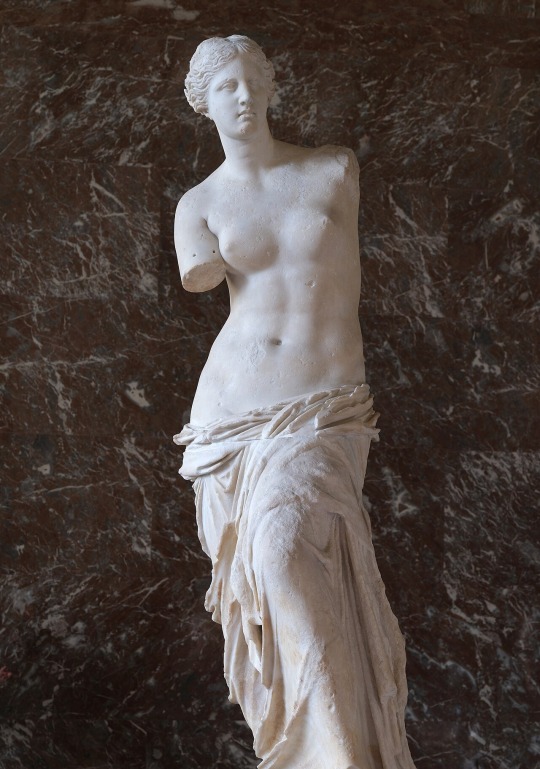
VENUS DE MILO | 150-100 BC |
THE VENUS DE MILO is a masterpiece of ancient GREEK art. Despite missing her arms, this marble statue exudes grace, beauty, and timeless elegance. The sculpture represents the idealized female form of classical antiquity.
The sculpture displays several characteristic HELLENISTIC traits, such as the twisting pose of the body and the sensuality of the figure. The drapery cascades softly around her hips and legs, emphasizing her feminine curves while also concealing her nudity. The statue was originally decorated with jewels, as evidenced by holes in the head, ears, and upper body.
THE VENUS DE MILO'S facial features are delicately rendered, with a serene expression that exudes a sense of inner tranquility and beauty. Though her arms are missing, the statue's enduring allure lies in its ability to captivate viewers with its enigmatic beauty, inviting interpretation and contemplation.
Scholars speculate about the original context and purpose of the VENUS DE MILO. Some believe she may have been created as a representation of the goddess APHRODITE, while others suggest she may have been a portrait of a mortal woman or even a COURTESAN. Regardless of her original purpose, it remains an enduring symbol of feminine beauty and grace.
KENNETH CLARK describes the figure as "the last great work of antique GREECE", and "of all the works of antiquity one of the most complex and the most artful....[the sculptor] has consciously attempted to give the effect of a 2nd-century work, "while also using "the inventions of his own time. "
#venus de milo#greek sculpture#hellenistic sculptures#hellenistic#hellenic pagan#hellenic polytheism#hellenic deities#aphrodite
59 notes
·
View notes
Text
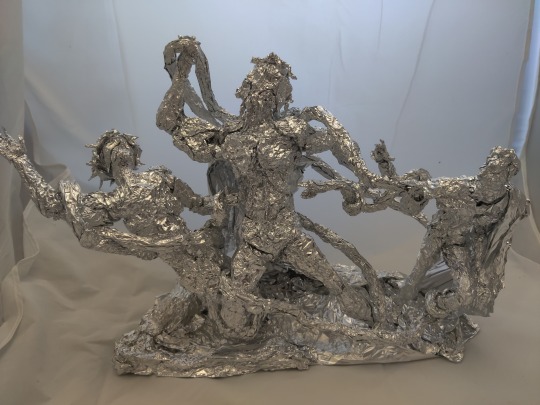
Laocoon and His Sons - Aluminum Foil Sculpture
#laocoon and his sons#greek#greek sculpture#greek art#roman#snake#hellenistic#hellenistic art#foil#sculpture#fanart
5K notes
·
View notes
Text

Bronze head of a goat. Artist unknown; 3rd-1st cent. BCE (Hellenistic period). Now in the Cleveland Museum of Art. Photo credit: Cleveland Museum of Art.
#classics#tagamemnon#Ancient Greece#Hellenistic period#art#art history#ancient art#Greek art#Ancient Greek art#Hellenistic art#sculpture#metalwork#bronzework#animals in art#goat#goats#Cleveland Museum of Art
495 notes
·
View notes
Text
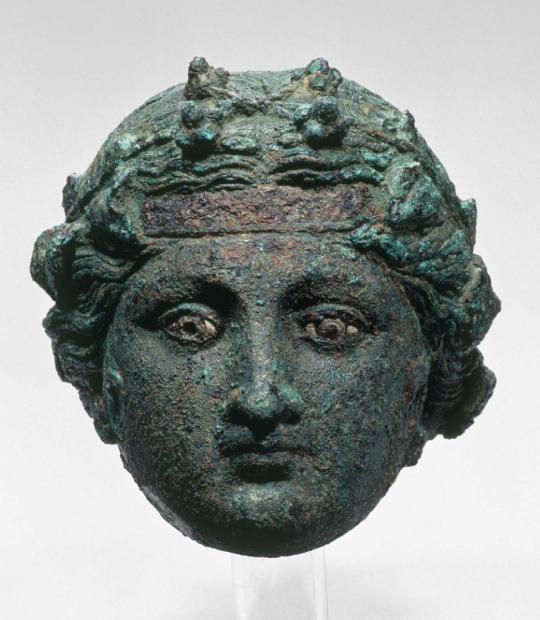
~ Head of a statue of Dionysos.
Culture: Greek
Period: Late Hellenistic
Date: 150–50 B.C.
Place of origin: Nubia (Sudan), Meröe (Begrawiya), Pyramid N 5
Medium: Bronze, silver, shell
#ancient#ancient art#history#museum#archeology#ancient sculpture#ancient history#archaeology#nubia#sudan#meroe#greek#Hellenistic#head of a statue of Dionysos#Dionysos#statue#150 b.c.#50 b.c.
2K notes
·
View notes
Photo

‘Winged Victory of Samothrace,’ (c. 200–190 BC)
Sculpture from the Hellenistic era depicting Goddess of victory, Nike,
Constructed of Parian marble, h: 328 cm,
Discovered in 1863 on the Greek island of Samothrace in the northern Aegean Sea, by Charles Champoiseau,
Musée du Louvre, Paris, France (1886 – present).
#winged victory of samothrace#art#sculpture#hellenism#hellenistic era#goddess#nike#ancient greece#ancient history#ancient art#marble#samothrace#nike of samothrace#charles champoiseau#winged being#louvre#paris#photography#art photography
4K notes
·
View notes
Text
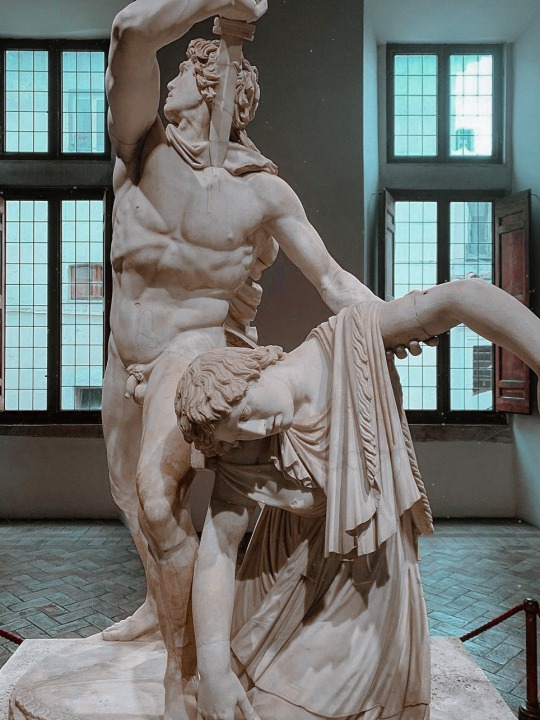

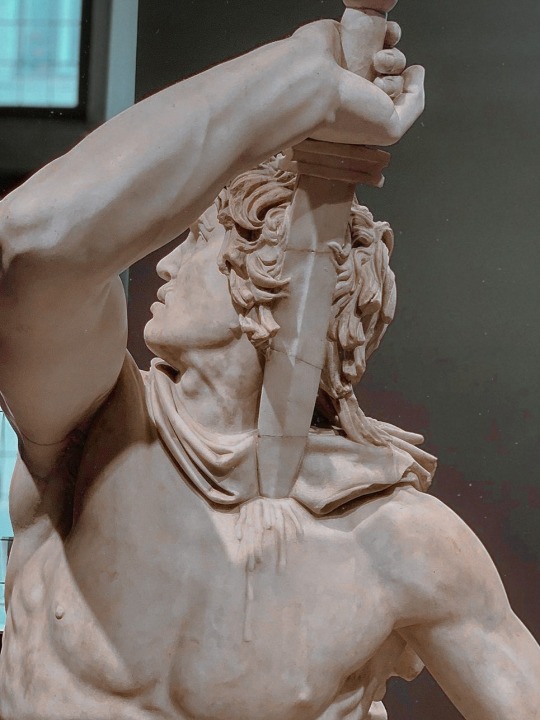

Ludovisi Gaul by Epigonus.
ig credit: charles.amsterdam.stpetersburg.
#sculptural#sculptor#sculpture#Epigonus#helenism#hellenistic#alternative#aesthetic#dark academia#dark academic aesthetic#dark aesthetic#aestheitcs#dark#art#light acadamia aesthetic#light academia
667 notes
·
View notes
Text

Silver centaur, Seleucid Empire, ca. 160 BC, gilded silver, Kunsthistoriches Museum, Wien.
#sculpture#art history#centaur#antiquity#mythology#mythological creature#greek art#hellenistic art#silver
819 notes
·
View notes
Text

Hellenistic sculptor: Epigonus (Greek: Ἐπίγονος), born in Pergamon, Türkiye
Ludovisi Gaul (The Galatian Suicide), 2nd century AD
National Roman Museum – Palazzo Altemps, Rome
This dramatic statue epitomizes the mixing of cultures in the Hellenistic Age. The statue is a Roman copy in marble of a now lost Greek bronze original made at Pergamum in Anatolia by a Greek sculptor. The artist tells the tragic story of a defeated Celt (Gaul). Rather than be captured alive, he has just killed his wife and is at the precise moment of taking his own life. In typically Hellenistic style, the artist combines anatomical accuracy with psychological agony.
#The west encounters & transformations third edition#Hellenistic#Epigonus#greek#pergamon#turkey#classical art#ludovisi gaul#the galatian suicide#gaul#gaulish#celtic#celt#germanic tribes#art#fine art#european art#europe#european#fine arts#europa#mediterranean#western civilization#the west#sculpture#statue#male figure#galatian celt#marble statue#marble
95 notes
·
View notes
Text
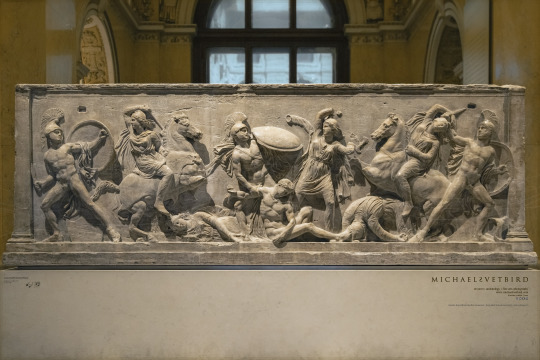

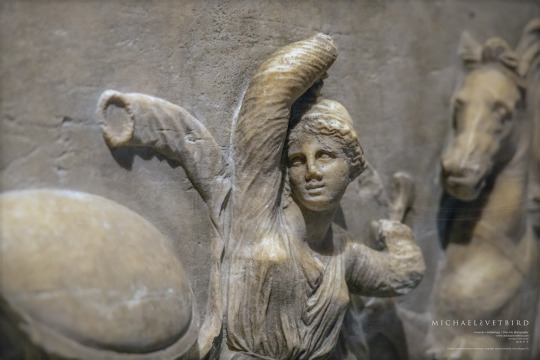
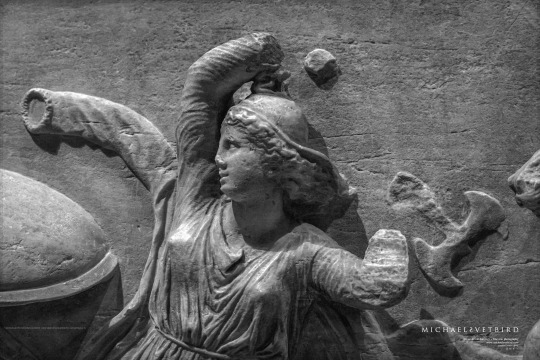

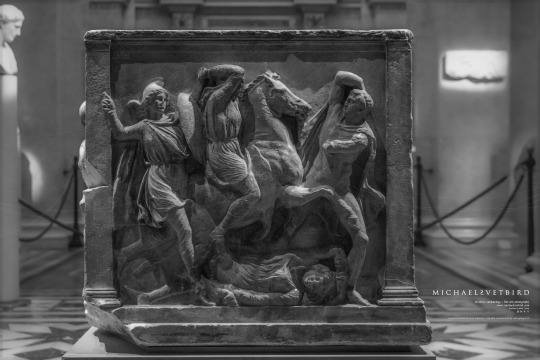
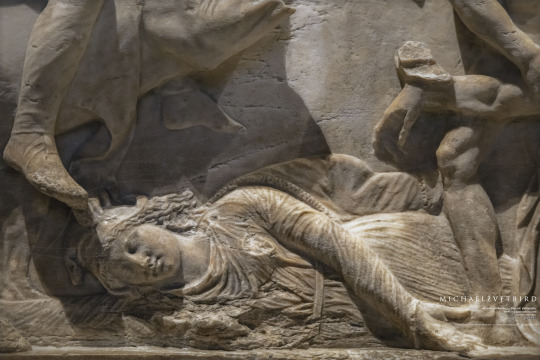
AMAZONOMACHY Sarcophagus
From Soli, Northern Cyprus [found in 1557]
https://en.wikipedia.org/wiki/Soli,_Cyprus
Hellenistic period, 2nd half of the 4th c. BC
Marble
Provenance and additional data:
https://www.khm.at/objektdb/detail/50832
KunstHistorisches Museum, Vienna | KHMV
["Ancient Greece and Rome", Saal XI]
• Web : https://www.khm.at/en
• FB : https://www.facebook.com/KHMWien
• IG : @kunsthistorischesmuseumvienna
KHMV | Michael Svetbird phs©msp | 08|23 6300X4200 600 [I.-VII.]
The photographed object is collection item of KHMV, photos are subject to copyright.
[non commercial use | sorry for the watermarks]
📸 Part of the "SARCOPHAGI:Reliefs" MSP Online Photo-gallery:
👉 D-ART:
https://www.deviantart.com/svetbird1234/gallery/69396046/sarcophagi-reliefs
👉 FB | Album:
https://www.facebook.com/media/set/?set=a.843393602695885&type=3
.
#vienna#kunsthistorisches museum#history museum#archaeological museum#sarcophagi msp#sarcophagus#ancient sculpture#ancient art#antiquity#ancient#cyprus#archaeology#museology#greek mythology#art history#hellenistic#amazons#αμαζόνες#amazonen#amazzoni#amazones#oiorpata#warrior women#amazonomachy#photo gallery#art photography#archaeology photography#sculpture photography#museum photography#michaelsvetbird
110 notes
·
View notes
Text








A GREEK BRONZE HEAD OF EROS
HELLENISTIC PERIOD, CIRCA 2ND-1ST CENTURY B.C.
#A GREEK BRONZE HEAD OF EROS#HELLENISTIC PERIOD#CIRCA 2ND-1ST CENTURY B.C.#bronze#bronze statue#bronze sculpture#ancient artifacts#archeology#archeolgst#history#history news#ancient history#ancient culture#ancient civilizations#ancient rome#roman history#roman empire#roman art#ancient art#art history
45 notes
·
View notes
Text

Bronze bust depiction of Caligula, oil pastel and colored pencil on paper.
*
*
*
#artists on tumblr#traditional art#oil painting#oil pastel#oil pastels#portraiture#art prints#sketch#hellenistic#ancient rome#rome#roman art#bronze sculpture#sculpture#roman emperors#roman empire#caligula#etsyshop#etsyseller#colored pencils#colored pencil
34 notes
·
View notes
Text
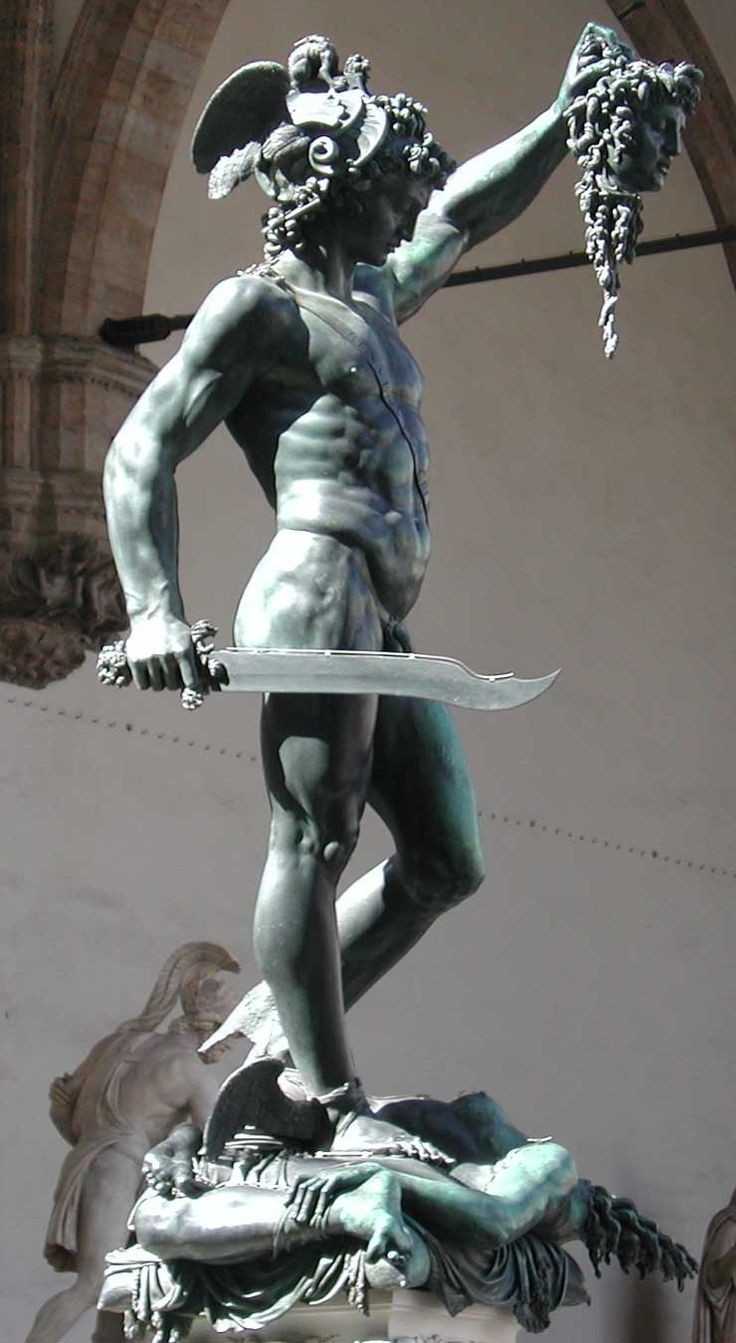
PERSEUS WITH THE HEAD OF MEDUSA | 1545–54 | by BENVENUTO CELLINI
The bronze statue depicts the mythological hero PERSEUS standing triumphantly over the body of MEDUSA, holding her recently severed head in one hand and his sword in the other.
CELLINI, a renowned goldsmith and sculptor of the RENAISSANCE period, was commissioned by COSIMO I DE' MEDICI to create this work in 1545. The sculpture is full of intricate details that bring the myth to life, such as PERSEUS' winged sandals for speed, and the helmet of invisibility. The base of the statue is an integral part of the composition, with figures representing MERCURY, DANAË, JUPITER, and MINERVA.
The creation of this sculpture was a remarkable technical achievement for CELLINI. The casting process was extremely complex, as he had to create a flame at a precise temperature to melt the bronze in a single casting. After cooling, the statue underwent a lengthy polishing process that lasted from 1549 to 1554, when it was finally presented in the square.
Beyond its technical mastery, PERSEUS WITH THE HEAD OF MEDUSA also had a significant political meaning in its time. The statue was seen as a representation of the power of DUKE COSIMO I, who had "CUT OFF THE HEAD" of the FLORENTINE REPUBLIC. MEDUSA symbolized the Republican experiment, and the snakes coming out of her body were interpreted as the discords that had always affected democracy.
CELLINI'S sculpture is a testament to the skill and innovation of RENAISSANCE SCULPTORS. The statue's technical complexity, intricate details, and political symbolism have made it a lasting icon of ITALIAN ART history
#perseus and medusa#medusa#renaissance sculpture#Renaissance#intricate#benvenuto cellini#sculptures#hellenistic sculptures#roman sculpture#greek sculpture#statues#18th century
24 notes
·
View notes
Text

Late Hellenistic or Early Roman Ribbed Glass Bowl,
Late 1st Century BC – first half of 1st Century A.D.
Syrian-Palestinian area or Italy,
H5.8 cm x Ø 12.8 cm
From the Windmill Collection of Ancient Glass.
#art#history#design#style#archeology#sculpture#antiquity#hellenistic#roman#glass#bowl#glass art#1st cetury BC#syrian#palestinian#italy#windmill collection
17 notes
·
View notes
Text

Statuette (white marble) of Hermaphroditus, the mixed-gender child of Hermes and Aphrodite. Artist unknown; 2nd cent. BCE (Hellenistic). Thought to have come from Rhodes; now in the Princeton University Art Museum.
#classics#tagamemnon#Ancient Greece#Hellenistic period#classical mythology#Greek mythology#Hermaphroditus#art#art history#ancient art#Greek art#Ancient Greek art#Hellenistic art#sculpture#statuette#marble#stonework#carving#Princeton University Art Museum
3K notes
·
View notes
Text


~ Bronze handle attachment in the form of a mask.
Period: Late Hellenistic or Early Imperial
Date: 1st century B.C.–A.D. 1st century
Culture: Greek or Roman
Medium: Bronze
#ancient#ancient art#history#museum#archeology#ancient sculpture#ancient history#archaeology#greek#roman#mask#Hellenistic#imperial#handle attachment#1st century B.C.#a.d. 1st century
1K notes
·
View notes
Photo
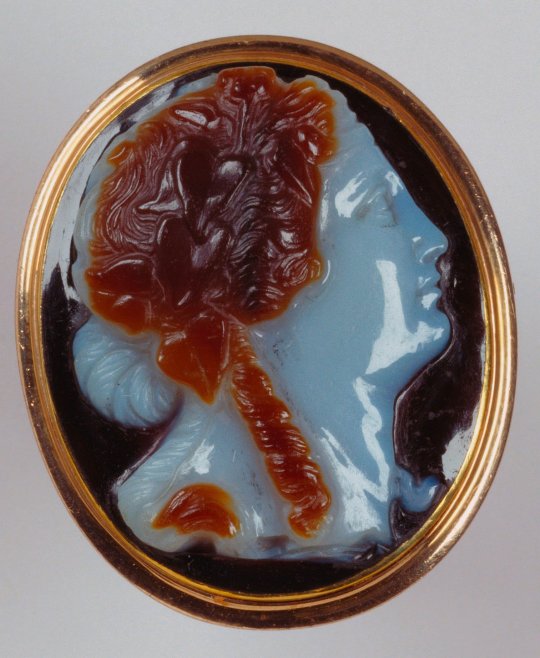
Onyx cameo of Ariadne, in a modern gold ring. Greek, Hellenistic Period, 3rd-2nd centuries B.C. In the Royal Collection.
Description from the Royal Collection Trust:
Cameo with a head of Ariadne, consort of Dionysos, facing to the right with her gaze slightly lifted. She wears a wreath of ivy leaves and berries. Her hair is gathered in a roll at the back and ringlets cascade down her neck with a stray lock before the neck. A trace of her dress becomes visible along the neckline. The rather fleshy features and short nose recall portraits of Ptolemaic queens and the resemblance may be deliberate since such assimilation to deities was common practice.
#Ariadne#mythology#ancient art#Ancient Greece#Hellenistic art#Hellenistic Period#Ptolemaic Dynasty#goddess#Hellenistic#Greek#onyx#cameo#sculpture#Royal Collection Trust
205 notes
·
View notes